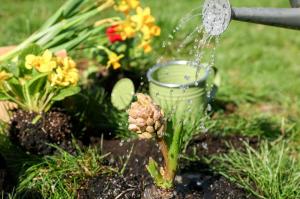How to Prune Rubber Tree Plant
Rubber tree plants are popular indoor and outdoor decorative plants that are known for their attractive foliage and easy-to-care nature. Pruning is an essential aspect of rubber tree plant care that helps maintain their shape, size, and overall health. However, pruning should be done with care to avoid damaging the plant's structure and causing it harm. In this article, we'll take a look at some steps to follow when pruning a rubber tree plant.
1. Understand the Plant's Growth Habit
Before pruning a rubber tree plant, it's essential to understand the plant's growth habit. Rubber trees grow tall and often attain heights of 100 feet or more in their natural habitat. Indoor rubber tree plants can grow to a considerable height if not pruned regularly. They have a straight central stem with lateral branches that form a canopy of leaves.
Pruning should be done in a way that maintains the plant's overall shape and encourages the growth of new lateral branches for a fuller appearance. Avoid removing the entire top portion of the plant as it may cause the plant to become lanky and unbalanced.
2. Identify the Branches to be Pruned
Identifying the branches to be pruned is crucial to ensure that the plant's overall structure is not damaged during the process. Look for damaged, diseased, or dead branches and prune them first. These branches can cause the plant to divert its energy to try and repair them, which can hinder its growth. Pruning them will encourage the plant to focus on healthy growth.
Also, look for branches that are rubbing against each other or those that are growing in opposite directions. These branches can cause the plant to become unbalanced and affect its overall appearance. You may also prune any lateral branches that are growing too close to the plant's main stem, impeding airflow and light.
3. Use the Right Pruning Tools
When pruning rubber tree plants, it's essential to use the right tools to avoid damaging the plant's structure. Use a pair of sharp pruning shears or secateurs to cut through the branches cleanly. Avoid using blunt or dirty tools as they can cause ragged cuts, which can increase the risk of disease and pests.
Disinfect your pruning tools before use by wiping them with a cloth soaked in rubbing alcohol. This will help reduce the risk of transferring any diseases from one plant to another.
4. Make Clean and Precise Cuts
When pruning a rubber tree plant, it's crucial to make clean and precise cuts to minimize damage to the plant's structure. Use your pruning shears to cut the branches close to the leaf node or joint. This encourages the growth of new lateral branches in that area, giving the plant a fuller look while maintaining its overall shape.
Avoid leaving any stumps or partial branches, as they can die back and cause unsightly growth or damage to the plant. If you accidentally make an improper cut or prune off too much of the plant, don't worry. Rubber trees are resilient plants that can regrow quickly and easily.
5. Dispose of Pruned Branches Properly
Dispose of pruned branches properly to prevent the risk of spreading any diseases or pests to other plants. Cut the branches into smaller pieces and discard them in a compost bin or dispose of them in the rubbish bin.
Avoid dropping pruned branches on the ground around the plant or in the garden, as this can attract pests and cause the plant to become susceptible to disease.
Conclusion
Pruning a rubber tree plant is essential to maintain its shape, size, and overall health. By following the steps outlined in this article, you can prune your rubber tree plant with ease and confidence. Remember to be mindful of the plant's natural growth habit, identify the branches to be pruned, use the right pruning tools, make clean and precise cuts, and dispose of pruned branches appropriately. With proper pruning, your rubber tree plant will thrive and continue to be an attractive addition to your indoor or outdoor decor.

 how many times do yo...
how many times do yo... how many planted tre...
how many planted tre... how many pine trees ...
how many pine trees ... how many pecan trees...
how many pecan trees... how many plants comp...
how many plants comp... how many plants can ...
how many plants can ... how many plants and ...
how many plants and ... how many pepper plan...
how many pepper plan...





























